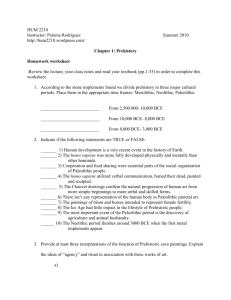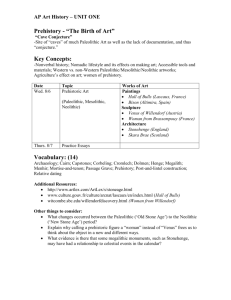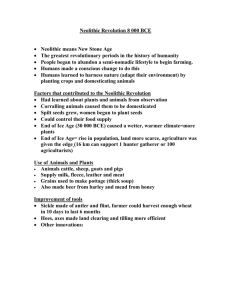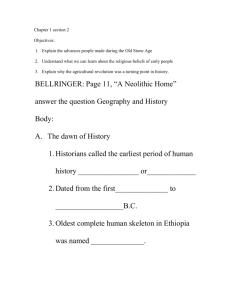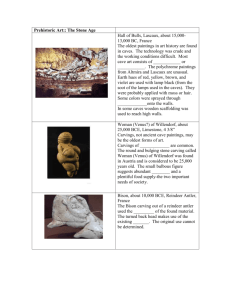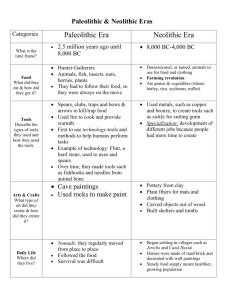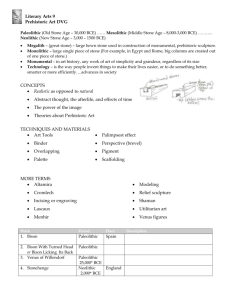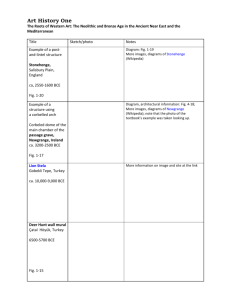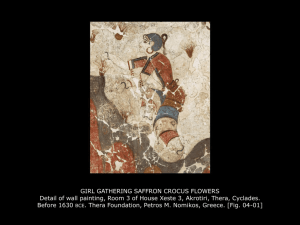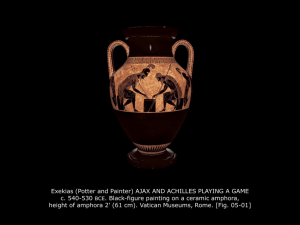AP Art History Chapter 1 Questions Ms. Cook
advertisement
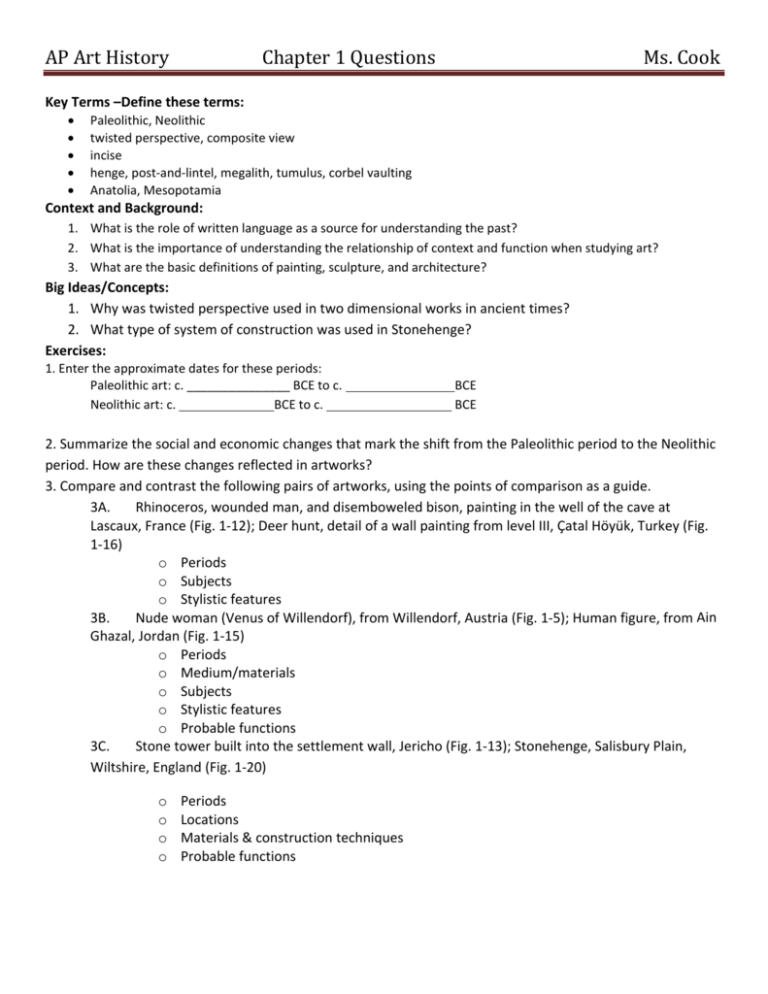
AP Art History Chapter 1 Questions Ms. Cook Key Terms –Define these terms: • • • • • Paleolithic, Neolithic twisted perspective, composite view incise henge, post‐and‐lintel, megalith, tumulus, corbel vaulting Anatolia, Mesopotamia Context and Background: 1. What is the role of written language as a source for understanding the past? 2. What is the importance of understanding the relationship of context and function when studying art? 3. What are the basic definitions of painting, sculpture, and architecture? Big Ideas/Concepts: 1. Why was twisted perspective used in two dimensional works in ancient times? 2. What type of system of construction was used in Stonehenge? Exercises: 1. Enter the approximate dates for these periods: Paleolithic art: c. _______________ BCE to c. Neolithic art: c. BCE to c. BCE BCE 2. Summarize the social and economic changes that mark the shift from the Paleolithic period to the Neolithic period. How are these changes reflected in artworks? 3. Compare and contrast the following pairs of artworks, using the points of comparison as a guide. 3A. Rhinoceros, wounded man, and disemboweled bison, painting in the well of the cave at Lascaux, France (Fig. 1‐12); Deer hunt, detail of a wall painting from level III, Çatal Höyük, Turkey (Fig. 1‐16) o Periods o Subjects o Stylistic features 3B. Nude woman (Venus of Willendorf), from Willendorf, Austria (Fig. 1‐5); Human figure, from Ain Ghazal, Jordan (Fig. 1‐15) o Periods o Medium/materials o Subjects o Stylistic features o Probable functions 3C. Stone tower built into the settlement wall, Jericho (Fig. 1‐13); Stonehenge, Salisbury Plain, Wiltshire, England (Fig. 1‐20) o o o o Periods Locations Materials & construction techniques Probable functions
